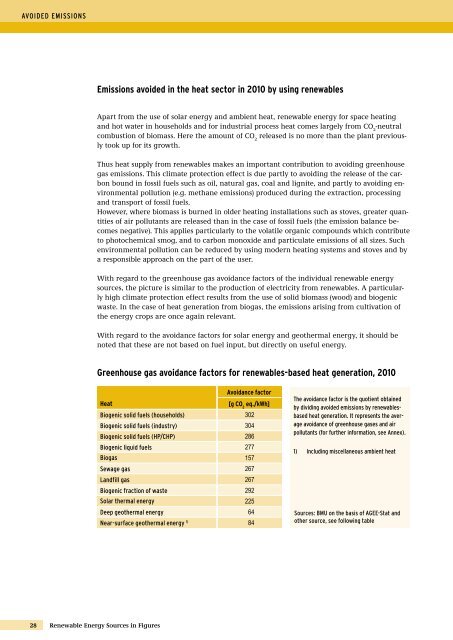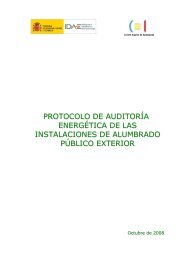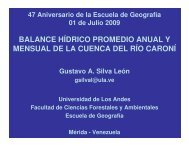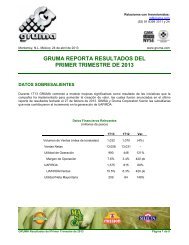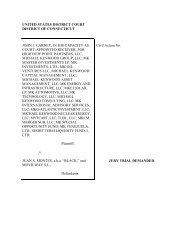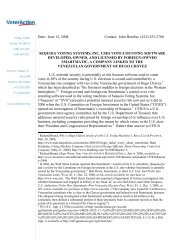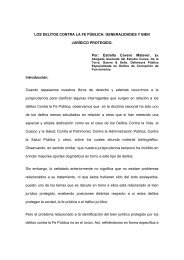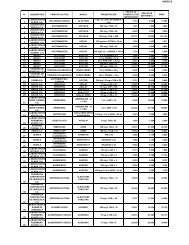broschuere ee zahlen en bf
broschuere ee zahlen en bf
broschuere ee zahlen en bf
Create successful ePaper yourself
Turn your PDF publications into a flip-book with our unique Google optimized e-Paper software.
aVOIDeD eMIssIONs<br />
28 R<strong>en</strong>ewable Energy Sources in Figures<br />
Emissions avoided in the heat sector in 2010 by using r<strong>en</strong>ewables<br />
Apart from the use of solar <strong>en</strong>ergy and ambi<strong>en</strong>t heat, r<strong>en</strong>ewable <strong>en</strong>ergy for space heating<br />
and hot water in households and for industrial process heat comes largely from CO 2 -neutral<br />
combustion of biomass. Here the amount of CO 2 released is no more than the plant previously<br />
took up for its growth.<br />
Thus heat supply from r<strong>en</strong>ewables makes an important contribution to avoiding gr<strong>ee</strong>nhouse<br />
gas emissions. This climate protection effect is due partly to avoiding the release of the carbon<br />
bound in fossil fuels such as oil, natural gas, coal and lignite, and partly to avoiding <strong>en</strong>vironm<strong>en</strong>tal<br />
pollution (e.g. methane emissions) produced during the extraction, processing<br />
and transport of fossil fuels.<br />
However, where biomass is burned in older heating installations such as stoves, greater quantities<br />
of air pollutants are released than in the case of fossil fuels (the emission balance becomes<br />
negative). This applies particularly to the volatile organic compounds which contribute<br />
to photochemical smog, and to carbon monoxide and particulate emissions of all sizes. Such<br />
<strong>en</strong>vironm<strong>en</strong>tal pollution can be reduced by using modern heating systems and stoves and by<br />
a responsible approach on the part of the user.<br />
With regard to the gr<strong>ee</strong>nhouse gas avoidance factors of the individual r<strong>en</strong>ewable <strong>en</strong>ergy<br />
sources, the picture is similar to the production of electricity from r<strong>en</strong>ewables. A particularly<br />
high climate protection effect results from the use of solid biomass (wood) and biog<strong>en</strong>ic<br />
waste. In the case of heat g<strong>en</strong>eration from biogas, the emissions arising from cultivation of<br />
the <strong>en</strong>ergy crops are once again relevant.<br />
With regard to the avoidance factors for solar <strong>en</strong>ergy and geothermal <strong>en</strong>ergy, it should be<br />
noted that these are not based on fuel input, but directly on useful <strong>en</strong>ergy.<br />
Gr<strong>ee</strong>nhouse gas avoidance factors for r<strong>en</strong>ewables-based heat g<strong>en</strong>eration, 2010<br />
Heat<br />
Avoidance factor<br />
[g CO eq./kWh]<br />
2<br />
Biog<strong>en</strong>ic solid fuels (households) 302<br />
Biog<strong>en</strong>ic solid fuels (industry) 304<br />
Biog<strong>en</strong>ic solid fuels (Hp/CHp) 286<br />
Biog<strong>en</strong>ic liquid fuels 277<br />
Biogas 157<br />
sewage gas 267<br />
landfill gas 267<br />
Biog<strong>en</strong>ic fraction of waste 292<br />
solar thermal <strong>en</strong>ergy 225<br />
D<strong>ee</strong>p geothermal <strong>en</strong>ergy 64<br />
Near-surface geothermal <strong>en</strong>ergy 1) 84<br />
the avoidance factor is the quoti<strong>en</strong>t obtained<br />
by dividing avoided emissions by r<strong>en</strong>ewablesbased<br />
heat g<strong>en</strong>eration. It repres<strong>en</strong>ts the average<br />
avoidance of gr<strong>ee</strong>nhouse gases and air<br />
pollutants (for further information, s<strong>ee</strong> annex).<br />
1) Including miscellaneous ambi<strong>en</strong>t heat<br />
sources: BMu on the basis of aG<strong>ee</strong>-stat and<br />
other source, s<strong>ee</strong> following table


